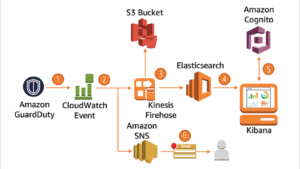Introduction: Why Performance Matters in Python
Python is one of the most popular programming languages due to its simplicity and efficiency. However, writing efficient Python code is just as important as writing correct code. When dealing with large-scale applications, performance bottlenecks can lead to slow execution and poor user experience. This is where Python’s timeit() function comes into play. It helps developers measure execution time and optimize their code for better efficiency.
With the increasing demand for high-performance applications in industries such as finance, Data Science, artificial intelligence, and web development, understanding how to benchmark and optimize Python code is a crucial skill. Many organizations prioritize performance optimization to enhance user experience, reduce operational costs, and increase overall application reliability.
In this blog, we will explore Python’s timeit() module in depth with practical examples. Whether you are preparing for a Python programming language certification or looking to Learn Python Online, mastering timeit() is an essential skill that will set you apart. By the end of this article, you will be able to measure execution times effectively, compare different approaches, and write optimized Python programs.
What is Python timeit()?
The timeit() module in It is used to measure the execution time of small code snippets. It runs the code multiple times and provides an average execution time, ensuring accurate performance measurement.
Key Features of timeit()
- Measures execution time of Python code accurately
- Runs code multiple times to reduce variability
- Avoids system-related inconsistencies in performance measurement
- Useful for benchmarking and optimizing code
- Helps in comparing different implementations for the same functionality
How to Use timeit() in Python
There are multiple ways to use the timeit() function. Let’s break them down with step-by-step instructions and code examples.
1. Using timeit.timeit() Method
The timeit.timeit() method is used to measure the execution time of a code snippet. It runs the statement multiple times and returns the execution time.
Example:
import timeit
code_snippet = """
result = [x**2 for x in range(1000)]
"""
execution_time = timeit.timeit(code_snippet, number=1000)
print(f"Execution Time: {execution_time} seconds")2. Using timeit.repeat() for Multiple Runs
The timeit.repeat() method runs the code multiple times and returns a list of execution times, making it useful for performance benchmarking.
Example:
execution_times = timeit.repeat(code_snippet, number=1000, repeat=5)
print(f"Execution Times: {execution_times}")3. Using timeit in Functions
You can also use timeit() to measure the execution time of functions.
Example:
def square_numbers():
return [x**2 for x in range(1000)]
execution_time = timeit.timeit(square_numbers, number=1000)
print(f"Execution Time: {execution_time} seconds")4. Using timeit from the Command Line
Python allows you to use timeit directly from the command line.
python -m timeit "[x**2 for x in range(1000)]"This provides a quick way to test execution times without writing a script.
5. Using timeit.Timer() for More Control
The timeit.Timer() class allows for greater flexibility in measuring execution time, particularly when integrating with custom setups.
Example:
timer = timeit.Timer("[x**2 for x in range(1000)]")
execution_time = timer.timeit(number=1000)
print(f"Execution Time: {execution_time} seconds")6. Using timeit with globals()
When measuring execution time within a function, using globals() allows access to external variables.
Example:
def square_numbers():
return [x**2 for x in range(1000)]
execution_time = timeit.timeit("square_numbers()", globals=globals(), number=1000)
print(f"Execution Time: {execution_time} seconds")7. Comparing Two Different Implementations
timeit() is particularly useful when comparing two or more different methods for accomplishing the same task.
Example:
setup_code = "import numpy as np"
method1 = "[x**2 for x in range(1000)]"
method2 = "np.square(np.arange(1000))"
time1 = timeit.timeit(method1, number=1000)
time2 = timeit.timeit(method2, setup=setup_code, number=1000)
print(f"List Comprehension Time: {time1} seconds")
print(f"NumPy Vectorized Time: {time2} seconds")Real-World Applications of timeit()
1. Optimizing Python Code
If you have multiple approaches to solve a problem, timeit() helps you determine the fastest one. For example, let’s compare map() vs. list comprehension for squaring numbers.
Example:
list_comprehension = "[x**2 for x in range(1000)]"
map_function = "list(map(lambda x: x**2, range(1000)))"
lc_time = timeit.timeit(list_comprehension, number=1000)
map_time = timeit.timeit(map_function, number=1000)
print(f"List Comprehension Time: {lc_time}")
print(f"Map Function Time: {map_time}")Best Practices When Using timeit()
- Always run code multiple times using
numberto get accurate results. - Avoid measuring trivial operations since variations in execution can affect accuracy.
- Use
repeat()instead oftimeit()when benchmarking different implementations. - For complex scripts, consider using profiling tools like
cProfileinstead oftimeit().
Conclusion and Next Steps
Understanding the timeit() module in Python is essential for writing efficient and optimized code. By integrating timeit() into your workflow, you can Benchmark different implementations and improve performance significantly.
Want to learn Python online and master performance testing techniques? Enroll in our Python programming online course at H2K Infosys today and gain hands-on expertise to boost your career!

























